The Making of Peggle
Sukhbir Sidhub: The prototypes I did were more luck based and random. The prototypes Brian [Rothstein, the programmer] did were more skill based, and there were good things and bad things about both.
We got to a point where it was really fun, but it was overly twitchy. It needed fast reflexes and we sort of said, this is fun, this could be a game, but we didn't know how accessible it was going to be.
We stepped back and simplified it and had some spinning crosses instead of pegs. We tried that and it was kind of fun, but we found that with spinning crosses it was impossible to really anticipate where the ball was going to bounce, it was just too random.
Then we changed it to pegs, and basically it was a game where you clear all the pegs. It was kind of fun, but it always had that problem where getting the last peg was super frustrating.
That's when we decided, well, what if it was just 25 pegs you had to hit? I wonder if that would be fun? After that one prototype when we had the 25 pegs, that was it pretty much. We were like, “You know, this is kinda fun.” We spent a few days on that, had a few people play it and felt like … that felt like it.
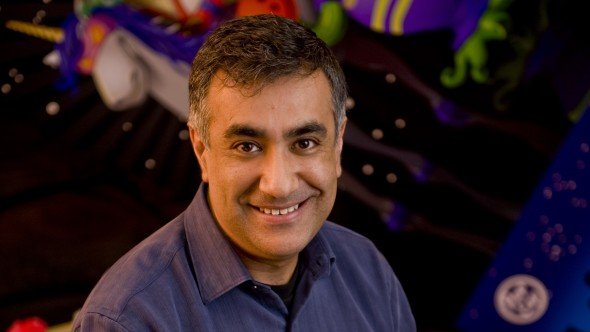
Jason Kapalka: Then there was a year or two of graphics and themes and names and all that stuff. There's about 300 Peggle variants.
Sukhbir Sidhub: Yeah, so many different ones. Even that [first] prototype had some early themes of Peggle, the classical music and a unicorn in it, so even back then we had some ideas that ended up in the final version.
The biggest gaming news, reviews and hardware deals
Keep up to date with the most important stories and the best deals, as picked by the PC Gamer team.
Jason Kapalka: A lot of those were placeholder, or at leas we thought it was. The Ode to Joy and the unicorn and the rainbow. They were all placeholder stuff that we sort of assumed would be changed, and at one point wasn't Thor supposed to be the star of Peggle?
Sukhbir Sidhub: There was one point, yeah. We were playing around with themes. Jason's very big on themes. At the time, I didn't disagree with that, but I didn't know what theme to put on this game. We'd just spent all this time trying to figure out what the mechanic would be.
Jason Kapalka: It was going to be Thor, and it was going to be called Thunderball.
Sukhbir Sidhub: Yeah, we tried that out and it just didn't work very well. It was a little forced and the art – it just wasn't coming together. And the artist wasn't really thrilled with that theme either. It didn't really play to his strength.
Jason Kapalka: 50 levels of frost giants.
Sukhbir Sidhub: Exactly, yeah. So we ended up backing off and doing something more whimsical and fun. That's was something I was more into. It really fit in with Walter Wilson, the artist, his style.
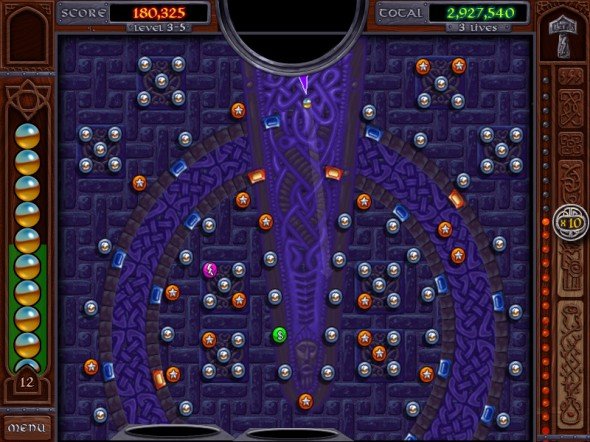
Jason Kapalka: As far as the theme went, it became its own theme. Sort of random.
Sukhbir Sidhub: Held together by randomness, pretty much.
Jason Kapalka: I don't know what the world of Peggle represents, but it didn't really need one.
Sukhbir Sidhub: At a certain point we had to make a decision about Ode to Joy and what Extreme Fever was. I'd thrown in, “Let's call it fever when you hit the final peg”, and I think Jason said “Let's call it Extreme Fever!”. And that sounds cool, so we called it Extreme Fever, and that's based on Pachinko games. At certain points in some Pachinko games you get the ball in a certain slot and it goes “Fever! Fever! Fever!” At that point it was completely random and we were like, “Should we really go with this because no-one's going to understand it?” and we decided to do that, and that's the point that we decided to...
Jason Kapalka: Embrace the randomness. Keep that unicorn in.
Sukhbir Sidhub: Yeah, keep basically all the crazy aspects of it, and try to make Extreme Fever as dramatic as possible. Because without it, it's a fun game, it's enjoyable but …
Jason Kapalka: If you're looking for a turning point, the point where we decided that the unicorn and the rainbow were not placeholder was the moment where we [became] more comfortable with embracing humour in a game. Doing something that we think is funny, even if we weren't sure anyone would get the joke. Peggle has been embraced by hardcore players a bit, but, it wasn't really clear at the time that that would happen.
Sukhbir Sidhub: It took a little while, but really the Half Life 2 Peggle Extreme edition really helped change people's minds about Peggle.
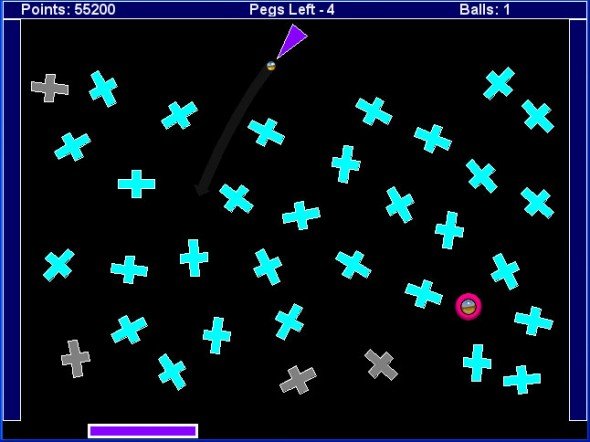
Jason Kapalka: I remember we were quite worried when we did the Half Life thing, because nobody really knew how these Half Life Orange Box buyers were going to respond to this Peggle thing. It was strange because of some of the comments we'd gotten afterwards. I clearly remember one guy had written, “This is the gayest game I have ever seen, yet I cannot stop playing it”.
Sukhbir Sidhub: The difference was, before Peggle Extreme came out, people were saying, “This is the gayest game we've ever seen,”, but they weren't saying “but this is awesome.” Afterwards they were saying, “This is the gayest game I've ever seen … but it's awesome!
Jason Kapalka: Somehow the association with Half Life gave hardcore gamers permission to say, “Oh, it's affiliated with Half Life, it's got to be cool, it's not gay!”
Jason Kapalka: That kind of paved the way for Plants vs Zombies as well, the idea that we could get away with something a little more surreal or silly, and kind of trust that people would get the joke. If you look at Peggle the wrong way, it looks like something that's been designed by a gang of idiots for their idea of a five year old. But it's not really pandering to five year olds. It's really just going for this surreal, zany look intentionally. We had to trust that people would get that.
PC Gamer: What was the Thor theme like?
Sukhbir Sidhub: I might have some pictures of it. It was pretty crap. We only did some explorations of it.
Jason Kapalka: It was very dark. Dark and dingy.
Sukhbir Sidhub: Yeah, it was dark and dingy with a lot of browns and dark colours.
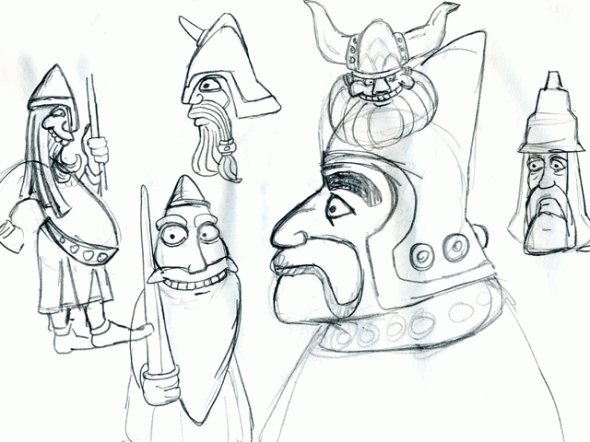
Jason Kapalka: I think it was that Thor and his pet goat were travelling across Asgard or something, and the hammer was the shooter, or something like that?
Sukhbir Sidhub: Yeah. I really liked the name Thunderball for it, even before we had a theme, I thought it'd be kind of cool. Ultimately, we kept that name for a good chunk of the development, and at a certain point we said, “This doesn't feel like a game that's called Thunderball at all”. It was really tough. Then we picked Pego, P-E-G-O, and we were really happy with it, and it grew.
Jason Kapalka: And then, Pogo!
Sukhbir Sidhub: And then right at the end, a few weeks before we were going gold we hear that we can't use Pego because Pogo [EA's Flash-game portal] might complain. I think they did complain.
Jason Kapalka: I don't think they complained. We ran it past the trademark guys and the trademark guys said it could be a problem. Then, ironically, we rang Pogo up and asked if they would mind if we used it, and they said “We might”.
Sukhbir Sidhub: So then we had to change the name and that was really tough. In retrospect sounds like a great name, but at the time it was like “Peggle!? Ugh! That doesn't sound like Pego!”
Jason Kapalka: That's happened to a lot of games.
Sukhbir Sidhub: Pego sounds weird now.
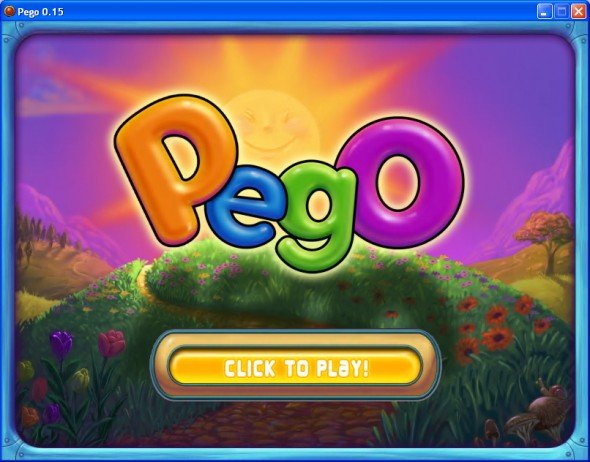
Jason Kapalka: Plants vs. Zombies also had, I don't know if you heard this story on the name for that.
Sukhbir Sidhub: Oh boy.
Jason Kapalka: It started off called Plants vs Zombies.
Sukhbir Sidhub: It was a placeholder name. It felt like a placeholder name for everyone.
Jason Kapalka: Then its name changed. I can't remember who suggested it, but the name changed to Lawn of the Dead. And it was an awesome name. At some point though, someone decided to run it past the lawyers.
Sukhbir Sidhub: It always goes wrong when you run it by lawyers.
Jason Kapalka: I will say this for our lawyers in this case, the lawyers said, “You know, you're going to have trouble with the movie company that owns rights to Dawn of the Dead”, and we said, “But wait, it's a parody!” and they said “Yeah, maybe, but it's also commercial and making money and so you can have that argument, but you might be having that argument in court.” It would have sucked to have to go to court for it.
Sukhbir Sidhub: Everyone was really upset about that whole notion, so.
Jason Kapalka: George Fan even put together a video message of himself in zombie makeup to George Romero, begging him.
Sukhbir Sidhub: It's like, if the lawyers don't agree then maybe we can get George Romero to stand up.
Jason Kapalka: To intercede or something like that, because we thought, he let them do Shaun of the Dead, he's a cool guy. He wasn't cool about it.
Sukhbir Sidhub: We found some sort of agent there who knew Romero's agent, and passed it on through this chain of people who knew George Romero. And George Fan did this video, and it took him a long time to get it together, we spent a lot of time making this little video plea to George Romero and packaged it up, sent it, and we basically just heard back, “Not interested.” That was crushing.
Jason Kapalka: Though there was a point of justice, because just recently this year we heard from some publicity company that was representing George Romero's new zombie film Survival of the Dead, and they wanted to see if we could do some sort of cross promotion with that. At that point we had the pleasure of being able to say, “We think your brand might pollute our game, we're not interested”
Sukhbir Sidhub: I don't even know if George Romero ever actually saw it. The agent might have just seen it and said...
Jason Kapalka: It's entirely possible he didn't have anything to do with it.

